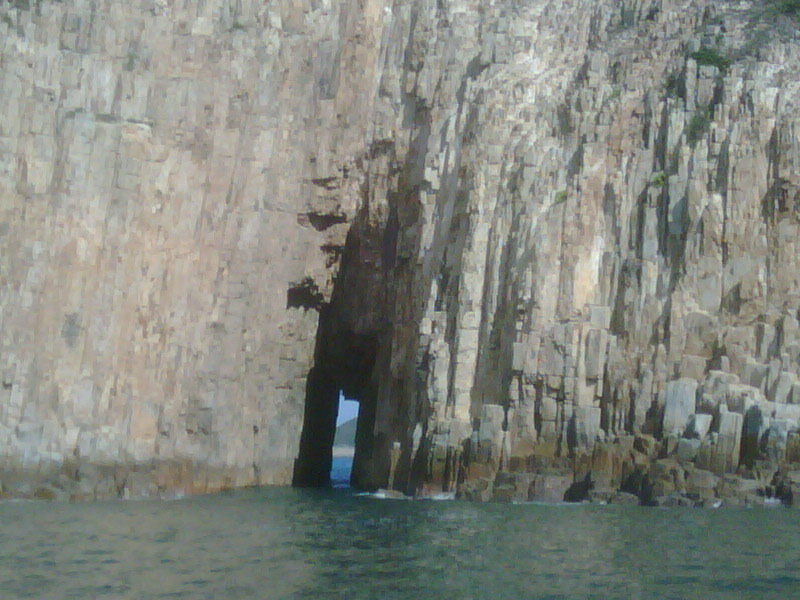Madeleine is in Asia for Christmas and there’s an arts festival taking place on a tiny island in this island-based place called Hong Kong. It’s called the Yim Tin Tsai Arts Festival, taking place on the tiny island of Yim Tin Tsai, and it has caught the eye of us and our friends.
What do we know and what was it all about? First of all, Yim Tin Tsai is an island within the island country that is made up of Hong Kong Island as well as the Kowloon Peninsula that is adjoined to the larger land mass that connects to. There are over 200 of similar “outlying islands” (official figures suggest there are 234 of these), and very few Hong Kongers have visited Yim Tin Tsai.
Second of all, it is a sleepy village that has a history of over 3 centuries that incorporates Catholicism as well as the Hakka culture. You can still see the Catholic legacy in the photogenic St Joseph’s Chapel, built in Romanesque style in 1890 and is now a Grade III listed building.
On top of that, you can still see traces of one of its important economic activities in its recent history, salt-making. In fact, the island’s name literally means “small salt field”, and yes, it’s a Catholic salt-making Hakka island village and probably the only one of its kind in the world! (Salt, of course, was an important industry for many years, used for flavouring and preserving food, but also to disinfect bamboo plumbing and to make saltpeter – a crucial ingredient in gunpowder, and of course a source of revenue for the government via taxes; local experts say that salt production probably began here around the third century BC; Tai O, on the island of Lantau, still produces shrimp paste, a pungent ingredient in Cantonese cooking that is made from just two ingredients, shrimp and salt).
The island is also marked by its geological formation: with volcanic Clearwater Bay Formation that were formed during the final stage of the Mesozoic Era, similar to those found on Sharp Island.
All in all, it’s a beautiful island with lush surroundings, birdsongs, and an abandoned (and therefore laid back) feel.
And the arts festival was launched on 29th November with a wonderful logo in aquatic blue (with the word “field”) and the theme of “Sky” in its first year (the next years’ themes are “Earth” and “Man”), with workshops on salt-making and Hakka tea cake making, a demonstration of Hakka embroidered bands, cultural ecology guided tours, environmental theatre performances, Christmas carol singing, and others. It is part of a three-year pilot scheme that aims to turn the island into an open museum.
The island and its salt pans had effectively been abandoned since the early 1990s; since the early 2010s, the Government had started revitalizing the salt pans and to preserve the villagers’ cultural heritage as well as the ecological aspect of the island.
We at Madeleine’s love the treks around the Sai Kung area (this photo was taken during a kayak tour of the islands in the area) as well as HK’s islands (see here for some of our “intrepid escape ideas”) and so have made day trips to and enjoyed glimpses of this beautiful island before, but this arts festival is sure to increase interest in and give a new lease of life to not only Yim Tin Tsai but to these “outlying islands” around Hong Kong. We’d happily do some island hopping! Equally importantly, we love ideas and events that try to find ways to rediscover, renew interest in and sustain myriad local cultures.
Practical note #1: the island is just over 500 metres (550 yards) across, and with the highest point a mere 37 metres (120 feet) above sea level, so it’s very easy to navigate!
Practical note #2: You can get to the island by taking the small ferries that run from Sai Kung’s waterfront promenade regularly, with the ride being around 15 minutes and costing around HK$45 for a round trip.
Looking across to Japan and Taiwan, we love two other festivals that revolve around islands and are located amongst fields: the Setouchi Triennale art festival held on 12 islands in the Seto Island Sea in Japan, as well as the Chishang Autumn Rice Harvest Arts Festival, with its outdoor concerts held in a location lined by rice paddies on both sides autumn every year and now in its 12th year (the spectacularly interesting Cloud Gate Theatre was an early participant – here’s a 45-year retrospective piece, Instagram-style, of this “amazing” and “formidable” group done by Guardian). While we are at it, we may also mention free summer’s concerts at the Myer Bowl (the Myer Bowl Free Concerts) in Melbourne every year typically in late January or early February (the Australian summer!), where you bring a picnic to sit on the grass in the middle of the city by the Arts Centre and listen to classical music performed in these free concerts by the Melbourne Symphony Orchestra (a tradition that has been going on for 90 years). (Gates open usually around 4.30pm / 5pm).





